The Sisters of Charity and St. Vincent’s Institute
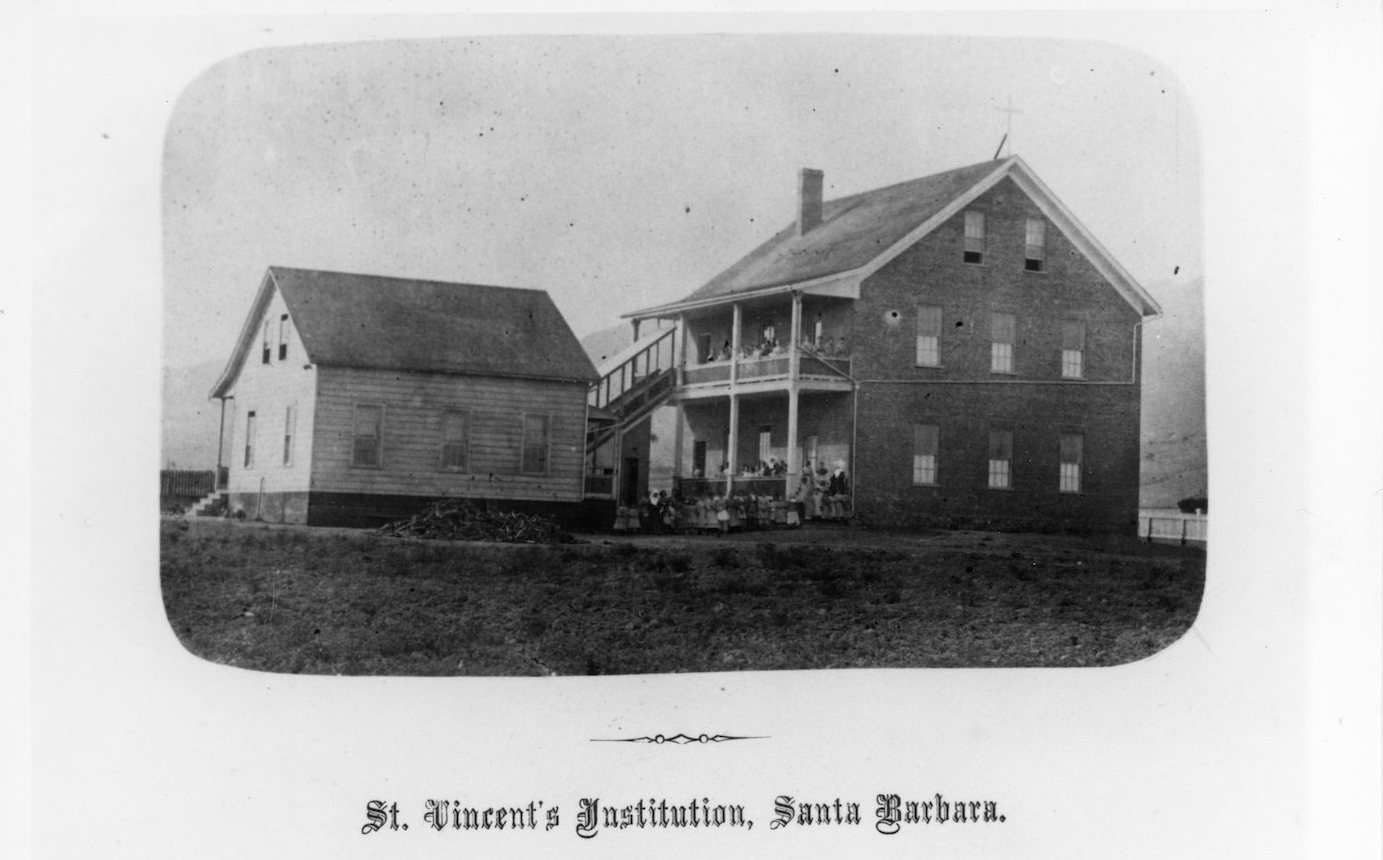
In 1854, Pope Pius IX consecrated Thaddeus Amat y Brusi as bishop of Monterey. The reluctant prelate (he had tried to ditch the papal appointment) moved the headquarters of the diocese to Santa Barbara where he planned to build a cathedral for the relics of the newly beatified Saint Viviana. Arriving in December 1855, the glass coffin containing her bones (which were encased in an elaborately garbed wax effigy) were ceremoniously delivered to the chapel recently created in the Nicolas Den Adobe on the corner of Figueroa and State streets. Thus established and domiciled at the Mission, the Spanish-born Amat set to work.
In 1858, at Amat’s request, two Sisters of Charity from Emmitsburg, Maryland, and one Daughter of Charity from Spain arrived in Santa Barbara to establish a combined orphanage, boarding school, and day school. Sisters Andrea Gibbs and Mary Mullane traveled to Santa Barbara via the Isthmus of Panama using ships, trains, mules, and more ships to complete the treacherous journey. Landing in Santa Barbara on January 5, they were joined four days later by Sister Angelita Mombrado.
The Sisters of Charity of St. Joseph were founded in Emmitsburg, Maryland, in 1809 by the now-canonized Elizabeth Ann Seton. Her organization was patterned after the Daughters of Charity founded by St. Vincent de Paul and Louise de Marillac in 1833 in France. There, they were called “daughters” to distinguish their organization from their cloistered sisters.
Both the American and French organizations were apostolic orders devoted to working with the poor and serving humankind. Both required each sister to renew her vows annually so each might leave the order freely. In 1850, the two orders merged, and the American branch adopted the blue habit, white collar, and white cornette of the French branch. Called “Daughters” today, in the United States the order continued to be called Sisters of Charity well into the 20th century.
Initially, they established a school in the Aguirre Adobe, an elaborate 19-room house that stood on the corner of Carrillo and Santa Barbara streets, the site of today’s Little Town Club. In 1863, the school was moved to the Cieneguitas area, where a cluster of neophyte Chumash farmers had a village and an asistencia, a small rural mission. The property had once belonged to the Santa Barbara Mission, which ostensibly, had held it in trust for the Chumash people until Mexico achieved its independence from Spain and secularized missions and appropriated the Catholic lands.
Moving Back to Town
Six years later, now under the direction of Sister M. Polycarp O’Driscoll, the Sisters returned to downtown Santa Barbara where they built a two-story, brick school building complete with dormitories at 925 De la Vina Street. They advertised a curriculum given in English or Spanish for children of all denominations. Board and tuition for the year cost $150; bedding, $15; books and stationery, $25; and there were extra charges for materials needed for embroidery, crochet, etcetera. Orphans, it is presumed, were given these services gratis and supported by charitable donations. At the end of each school year, an elaborate and instructive public program was given, in which pupils sang, gave speeches, recited poetry and essays, and played musical instruments.
On March 16, 1874, disaster struck. The beautiful new building burned to the ground due to a faulty flue, a strong northwest wind, and the lack of water. Four days later, the supporters of St. Vincent’s came to the rescue by planning a fundraising concert. José Lobero offered the free use of his new theater and helped organize the program as well. The Morning Press article said, “We hope the Sisters of St Vincent’s institute will receive the assistance they deserve in rebuilding a home for themselves and their little charges, not alone that we desire to see this structure again standing as an ornament to the town, but also because of the respect we have for this noble order of devoted women.”
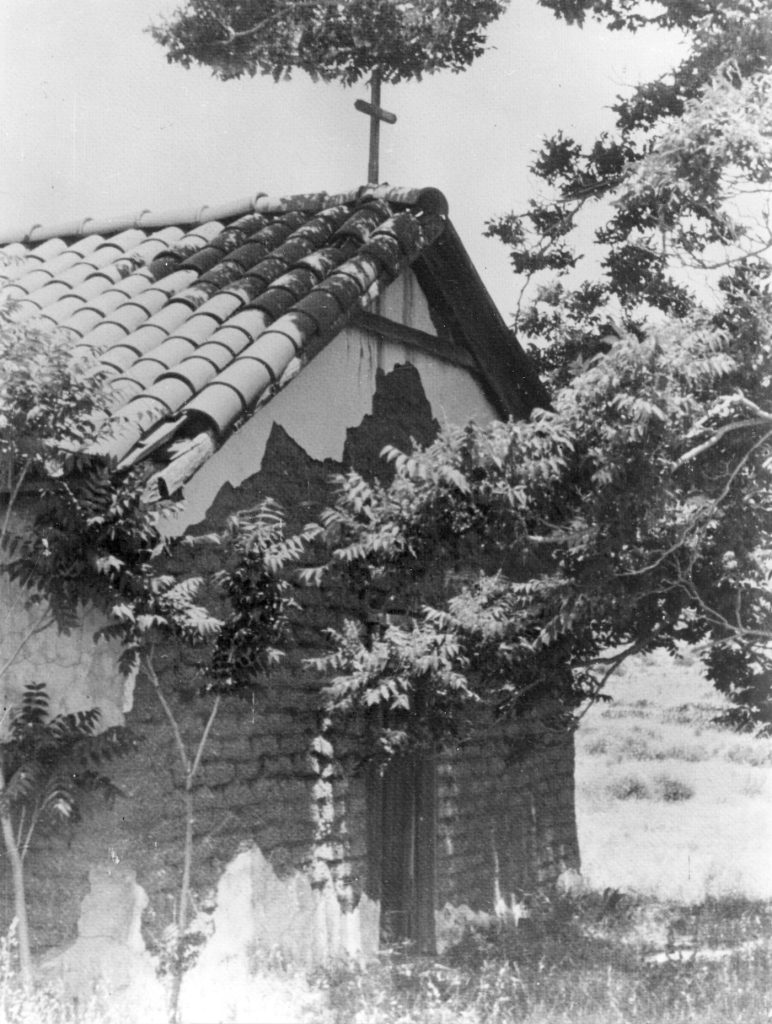
The “asistencia” stood at Cieneguitas, whose name means “little swamps” in Spanish (Courtesy Santa Barbara Historical Museum) 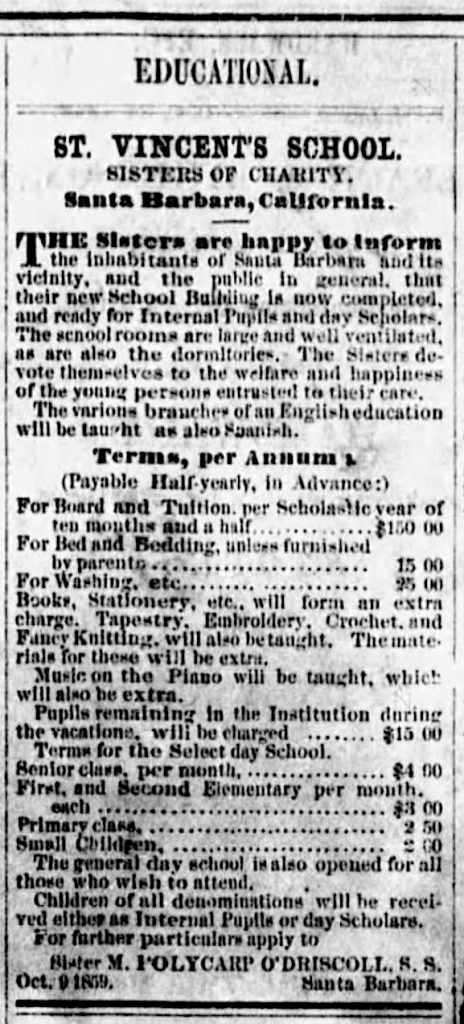
An advertisement from July 1870 announced the completion of the new brick building and the cost of schooling (Newspapers.com)
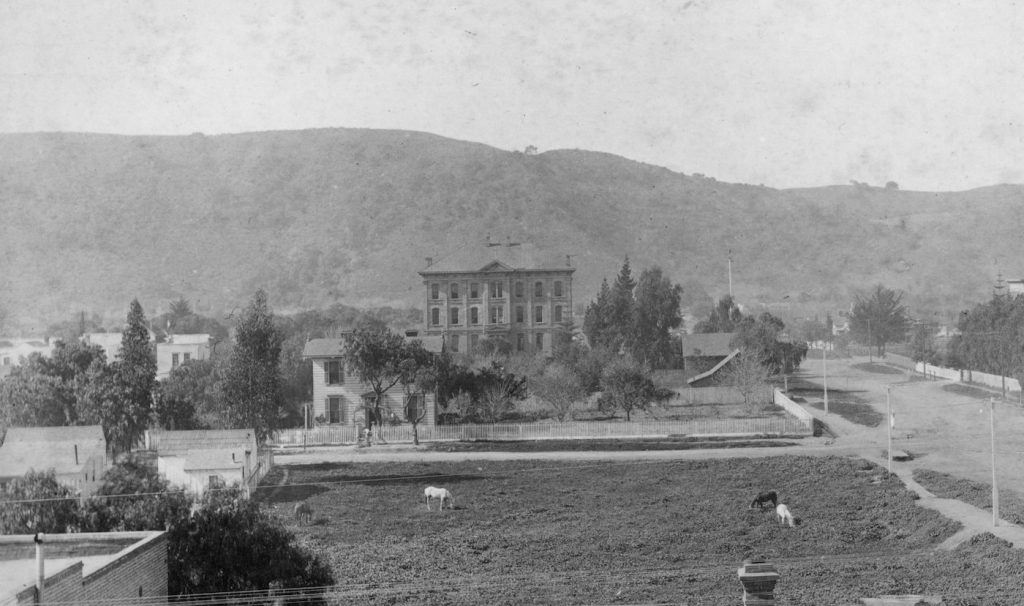
Help arrived from many sources and by September 1874, the foundations of a new building were being completed. This one was to be three stories high and built of stone and brick. It was to be much larger than the previous edifice with greater elegance of architectural design as well. Completed in time for the 1875/76 school year, it would house the school and the orphanage until the 1920s. In 1877, the Sisters also established an infirmary on the part of their property fronting Carrillo Street.
By 1880, the community was showing its support for St. Vincent’s by attending annual Orphan’s Fairs. That year, craft items made by the scholars and boarding pupils of the school and a raffle were featured at a multi-day event.
By 1913, the fair had grown so elaborately that different days were given over to different themes. Maria de la Guerra Taylor had charge of the Spanish evening and Miss Annie McCaughey had charge of a wildly popular Irish evening. Complete with tableaux and songs such as “Come Back to Erin” and “Exile,” the evening ended with a costumed presentation of “Home Rule” with representations of the English King, Ireland, and Columbia welcoming Ireland with “a pleasant smile.” (If only that had been historically true!)
In addition to all the performances and a doll contest, the number of booths had grown to include those devoted to hats, candy, children, ice cream, cascarones, flowers, games, and crafts. Over the years different groups in town treated the orphans to excursions and theatrical and musical performances.
For some reason, it was common for the newspapers to list the names of those who were orphans at St. Vincent’s Institution. In January 1902, for instance, the names of newly enrolled orphans and half orphans (children who had lost one parent) were as follows: half orphans – Elena Espinosa (age 13); Ernestine (13), Margaret (12), and Irene (2) Carrillo; and Ethel (11) and Camilla (3) Burnette. Louise Martinez (8) had been abandoned, and Clara Bejar (2) was a full orphan. For working widowers, it was often impossible to care for their young daughters and there was no option but to send them to the sisters. (I can only wonder, however, at the motivation behind a public announcement of names, but perhaps it reminded donners that the need was great and continually existed.)
A New Home
By 1922, the beautiful St. Vincent’s building was showing its age and limitations. Due to the lack of a heating system in the building, extreme cold forced the Sisters to put the children to bed to keep them warm. Water had to be heated in pails and other containers to provide daily baths. Plans arose to build a new, modern facility on their 60-acre ranch tract in Goleta. They planned to sell the block of the current site and build anew with the proceeds. The orphanage, which was open to all girls, was the only orphanage in the tri-counties. That year, the orphan population numbered 130 of which 40 ranged in age from infant to eight years of age.
In 1924, St. Vincent’s made the move back to Cieneguitas where a new modern facility had been constructed. In 1936, St. Vincent opened a residential program and school for children with developmental disabilities. When these students were mainstreamed into the public schools in 1985, St. Vincent’s program changed to provide a communal housing program for special needs children. In 1996, St. Vincent’s opened a transitional housing program for single mothers and infants.
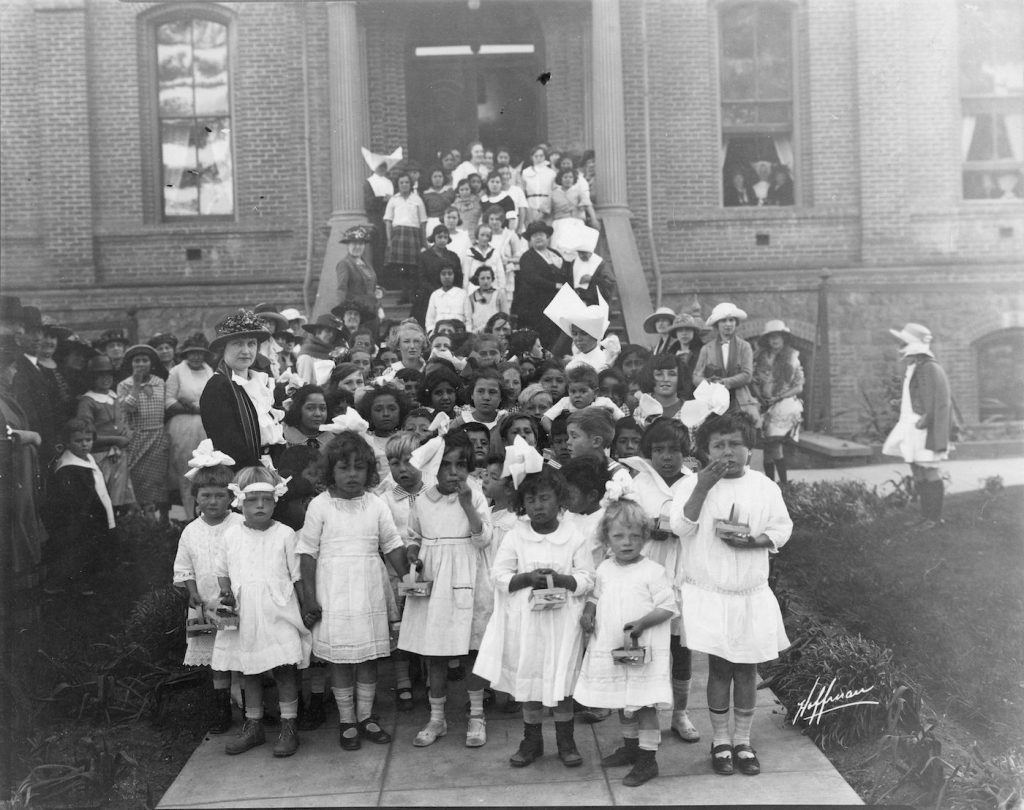
The class photo circa 1914 shows an assortment of students, orphans, community members, and Sisters. Notice the spectacular cornettes of the nun. (Courtesy of Santa Barbara Historical Museum) 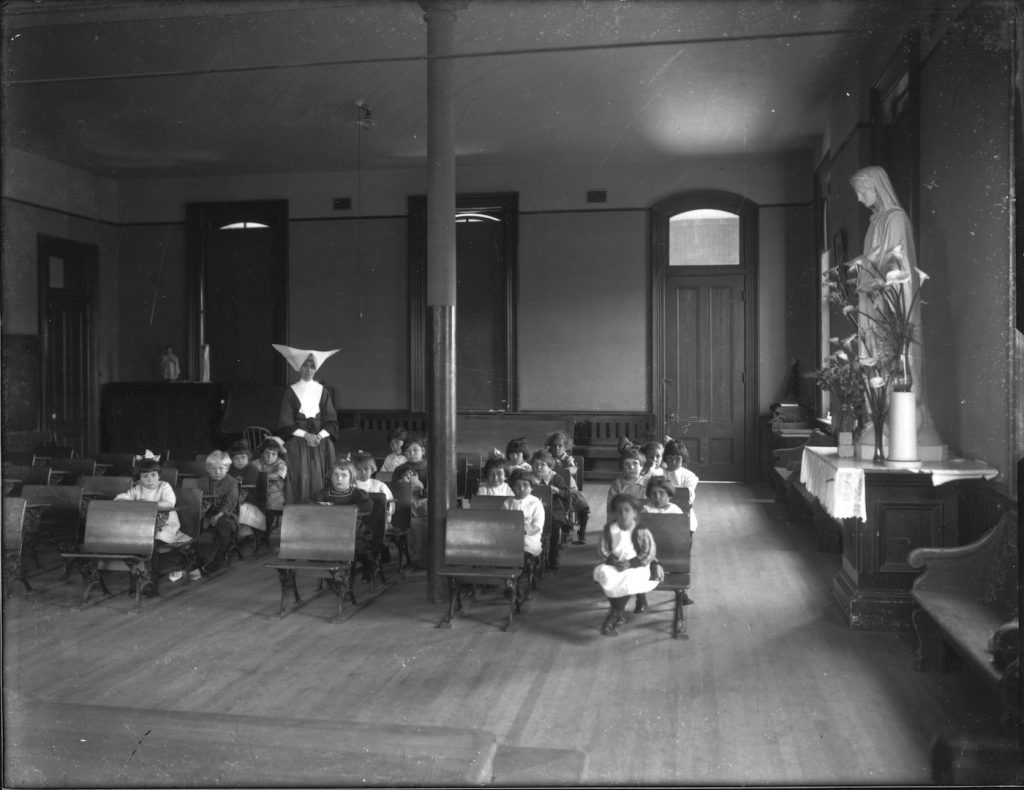
School days at St. Vincent’s circa 1914 (Courtesy of Santa Barbara Historical Museum)
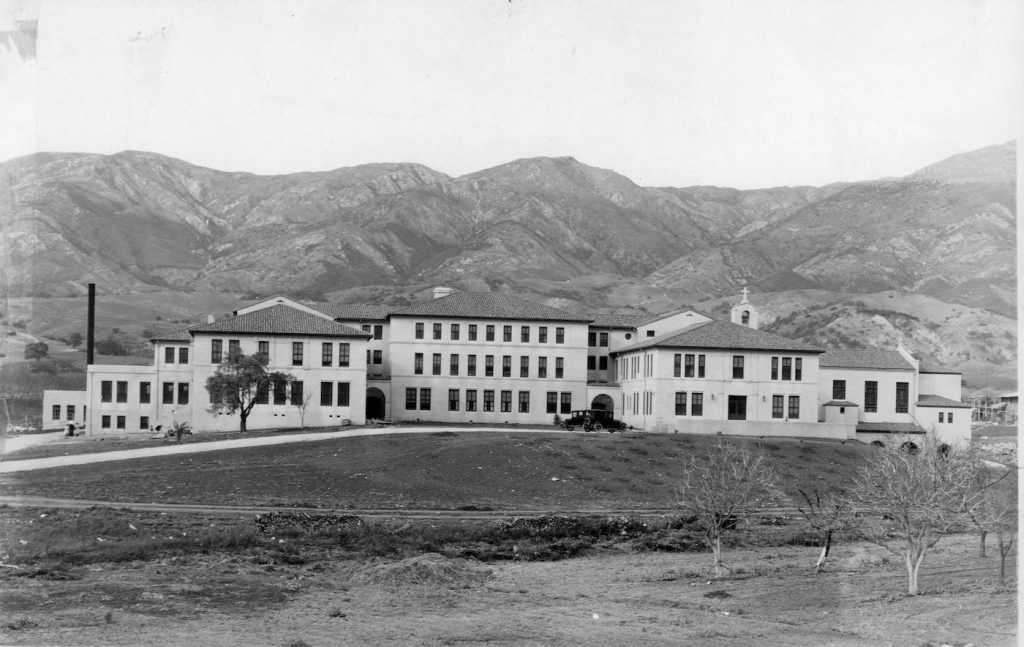
Today, St. Vincent’s continues to support the community with programs to strengthen low-income families and seniors. They provide affordable housing, early childhood education and family enrichment opportunities for people of all faiths. Five Sisters are an integral part of their 15-person management team. The current site is fast approaching its 100th year and the institution has reached its 164th year. St. Vincent’s is the oldest continuously operating charity in Santa Barbara.
Sources: www.stvincents-sb.org; contemporary newspaper articles; daugthtersofcharity.com – the journey west; Michael Redmon’s “History 101,” and Beresford’s “The Bishop and the Saint.”







You must be logged in to post a comment.